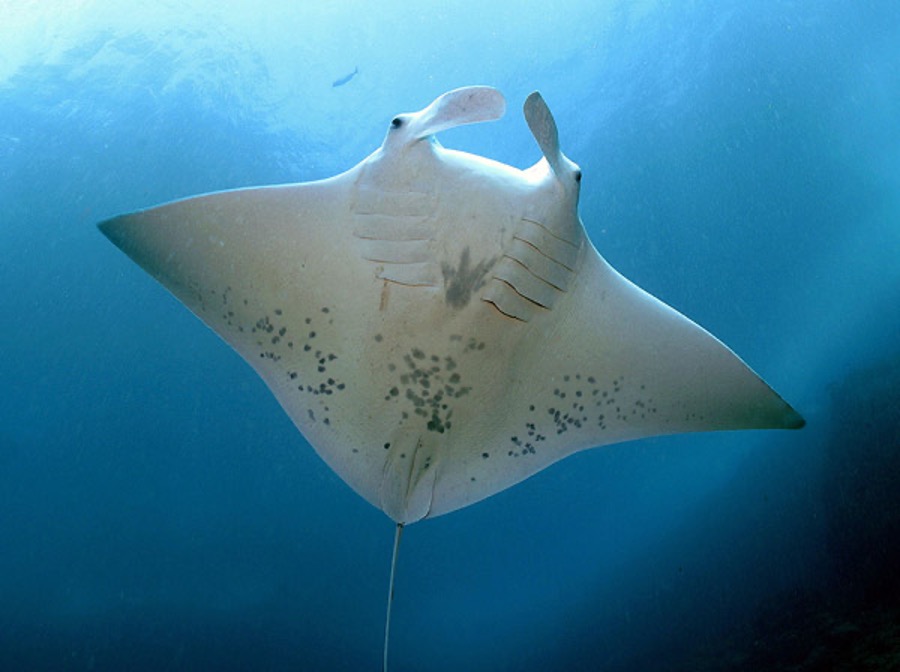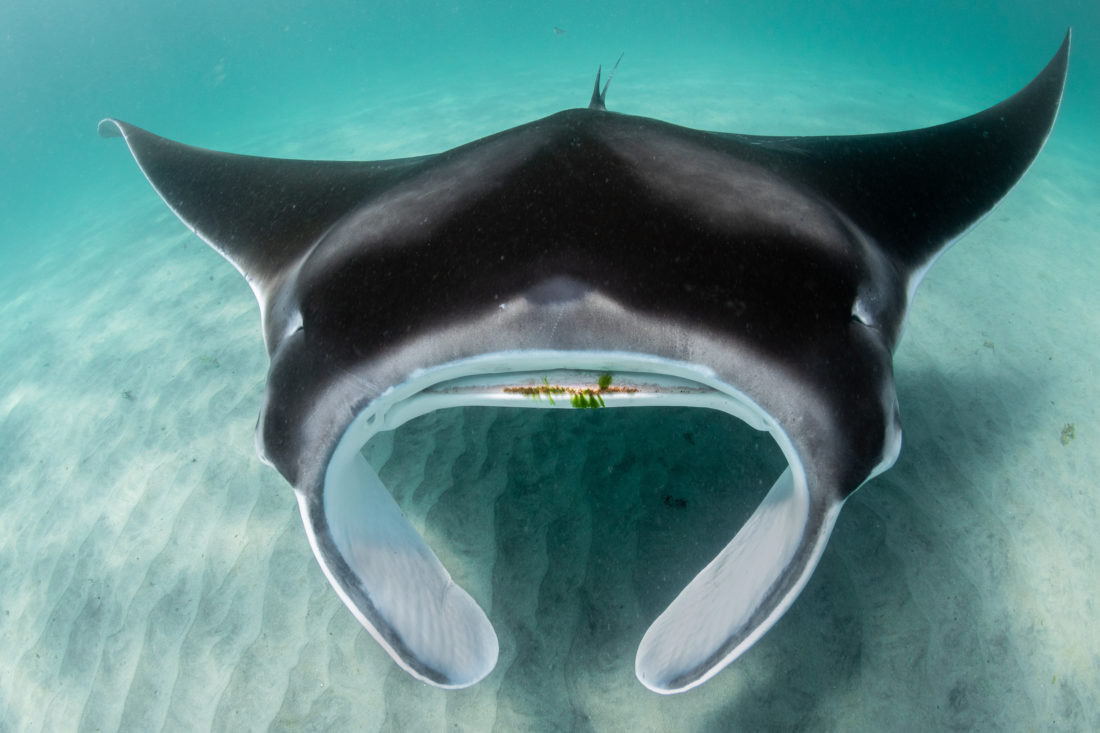By Fanis Michalakis,
The first fish to ever exist had a skeleton made of cartilage. Some fish called Osteichthyes developed a skeleton made of hard bones, but others kept the original skeleton. These are called Chondrichthyans, and they are a group of fish that include sharks, skates, and rays. Rays are like flat-bodied sharks. They have a very flattened body, and their pectoral fins, which they use to swim, are fused to the sides of the head, creating a disk- like shape. All rays have 5-7 gill slits that are usually facing downward as well. The largest of the rays belong to the Myliobatiforme order, in the Mobulidae family, which are also known as “devil rays”. They get their name from their cephalic fins which resemble horns.
Among the devil rays exist the Manta rays, which are two species, one that lives close to coasts and reefs (Mobula alfredi), and one that lives in the open sea, and can be found in great depths or close to the surface (Mobula birostri). The second one is the largest, with an average length of 7 meters. Manta rays are arguably the most well-known rays, due to their unique diamond shape, size, and cuteness. It also helps that although they are massive, they are harmless to humans. They are unique as their mouth is positioned facing forward instead of downward (like in the sawfish), which allows them to take advantage of a very effective way of feeding. They simply open their mouths, position their cephalic fins in a way to guide the water to their mouths, and just swim forward in areas where there is a lot of plankton. Studies have shown that they mostly feed on plankton, but due to their feeding method, they also eat microscopic shrimp and fish. Sometimes, they swim in packs when they migrate, and they have been observed feeding together.

Any research done on manta rays is based on observations of their behaviour and dead individuals. One of the biggest problems with research is observation, which is scarce especially in the oceanic manta ray, as we can only study them when they are close to the surface and then lose them again when they dive back down. A great way to find out more about the food would be to sample water from the area when they feed. Unfortunately, with the current technology, it is impossible. We also do nοt find many dead individuals to study, and since both species are classified as Vulnerable (VU) or Endangered (EN) by IUCN we can only study individuals that died from natural causes. The most effective way to find out about their diet is by checking and studying their guts. So, researchers have tried to identify the stomach contents and from what they have gathered, it seems that they feed on mesopelagic plankton, even though we see them close to the surface. There is a theory about their behaviour in feeding and their decision to move closer to the surface. Unlike us, manta rays are ectotherms, meaning that the environment is the deciding factor for their body temperature. However, they are also giants and they lose heat at a slower rate than other animals, which allows them to tolerate colder waters in deeper seas for longer periods of time. Still, they need a recovery period close to the surface where the water is warmer before going back to deeper water.
The behaviour of the manta ray is bizarre. There are instances where an individual jumped out of the water, as many dolphins and whales do, with great thrust and splashed back into the water. We still do nοt know what led to this. It might be part of a mating ritual, communication, or an attempt to get rid of parasites. On that note, parasites can get attached to the manta ray’s body which is why some individuals visit reefs which house cleaner fish. These fish specialize in eating parasites from the bodies (or even mouths) of others, which is a win-win situation. The “host” cleaner fish gets food, and the “client” reduces the number of parasites on it. Manta rays need to always keep swimming forward to force water to their gills to breathe, meaning that they can’t rest on the ocean floor, like other rays can.
Unfortunately, today both species have witnessed a huge decline of population with 80% of the individuals gone in some areas. The most common cause is hunting for their gills which are used for “traditional” Chinese medicine. What’s worse is that this practise is not even backed up by ancient texts. Thankfully, some countries have recognized the importance of the preservation of the species and have taken measures to ensure their longevity. This is why in some countries it is illegal to hunt manta rays. This decision also helps the economy of the country, since a dead manta ray will be a “one use” source of income, while a live one can raise so much more through tourism. Even if the reasons behind the protection of manta rays are monetary and not “pure”, hopefully these conservation areas will function as a safe haven and will allow manta rays to bounce back.




